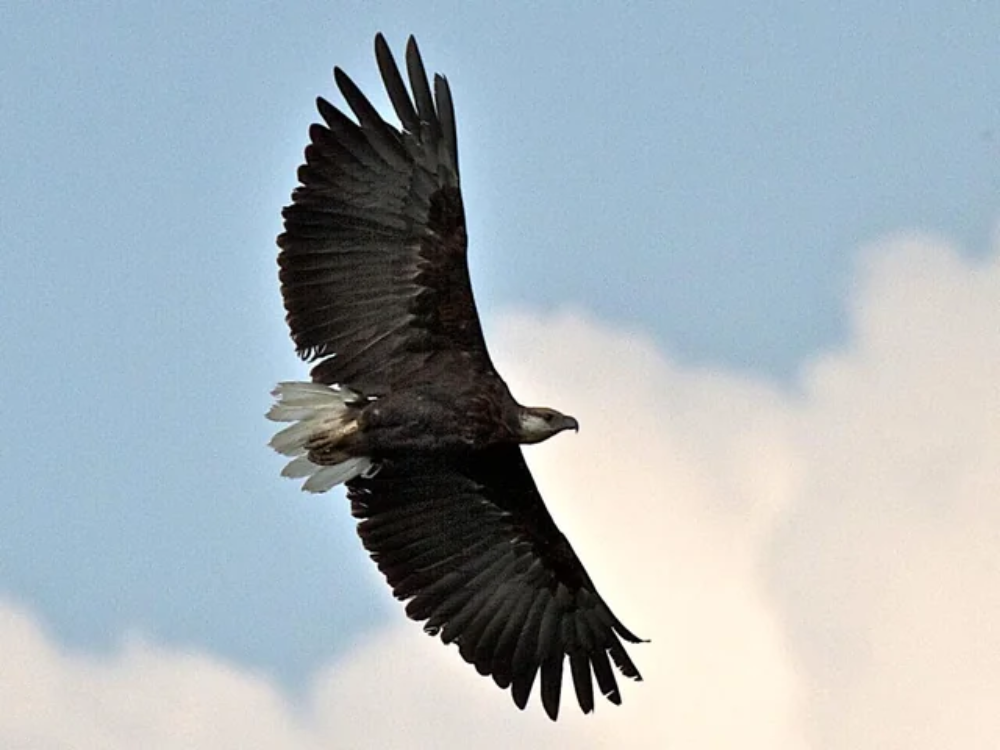Madagascar, the fourth-largest island in the world, is renowned for its unique biodiversity. Among its myriad of endemic species, the Madagascar Fish Eagle (Haliaeetus vociferoides) stands out as one of the island’s most majestic and endangered avian predators. This large bird of prey, known for its striking appearance and specialized hunting habits, is emblematic of the ecological richness and conservation challenges facing Madagascar.
Physical Description
The Madagascar Fish Eagle is a formidable bird, measuring between 70 and 80 centimeters in length with a wingspan that can extend up to 2 meters. Adults display a rich brown plumage on their body, contrasted by a white head and tail, and yellow legs. Their eyes are a piercing yellow, giving them a keen, watchful appearance. Juveniles have a more mottled brown coloration, which gradually changes to the adult plumage over several years.
Habitat and Distribution
Endemic to Madagascar, the fish eagle is found primarily in the western coastal regions of the island. Its preferred habitats are large, undisturbed bodies of water such as lakes, rivers, and coastal lagoons, where it can easily hunt for fish. These habitats are characterized by a mix of open water and forested areas, providing both hunting grounds and nesting sites.
Diet and Hunting Techniques
As its name suggests, the Madagascar Fish Eagle’s diet consists mainly of fish. It employs a remarkable hunting strategy, soaring high above the water to spot potential prey before diving down to snatch it with powerful talons. This method requires exceptional eyesight and precise coordination. In addition to fish, these eagles occasionally hunt other aquatic animals, such as crabs and small mammals, and will scavenge when the opportunity arises.
Breeding and Lifespan
Madagascar Fish Eagles are monogamous, often forming lifelong pair bonds. Breeding season typically occurs from June to September. They build large nests, often reused for several years, in tall trees or on cliffs near water. The female usually lays one to two eggs, which are incubated for about six weeks. Both parents participate in feeding and protecting the chicks, which fledge at around three months of age but remain dependent on their parents for several more months.
Conservation Status and Threats
The Madagascar Fish Eagle is listed as Critically Endangered on the IUCN Red List, with an estimated population of fewer than 120 breeding pairs. Several factors contribute to their precarious status, including habitat loss, human disturbance, pollution, and climate change. Deforestation, agricultural expansion, and the conversion of wetlands to rice paddies have significantly reduced their natural habitat. Increasing human activity in and around their habitats disrupts breeding and feeding. Fishing practices can also deplete their primary food sources. Pesticides and other pollutants can contaminate the water bodies they rely on, affecting both their health and that of their prey. Alterations in weather patterns can impact water levels and the availability of prey, further stressing the population.
Conservation Efforts
Efforts to conserve the Madagascar Fish Eagle are multi-faceted, involving local communities, governmental organizations, and international conservation bodies. Key strategies include habitat protection, community engagement, research and monitoring, and legal protection. Establishing and managing protected areas helps safeguard critical habitats from further destruction. Educating and involving local communities in conservation activities promote sustainable practices and reduce human-wildlife conflict. Conducting ongoing research to better understand the species’ ecology, population dynamics, and threats allows for more effective conservation planning. Strengthening and enforcing laws against illegal activities that harm the fish eagle and its habitat is also crucial.
Conclusion
The Madagascar Fish Eagle is not just a symbol of the island’s rich natural heritage, but also a barometer of the ecological health of its freshwater ecosystems. Its survival hinges on concerted conservation efforts that address the complex interplay of environmental and human factors. Protecting this magnificent bird is crucial, not only for its intrinsic value but also for the broader goal of preserving Madagascar’s unique biodiversity. The fate of the Madagascar Fish Eagle is a poignant reminder of the urgent need to balance human development with the stewardship of our natural world.










